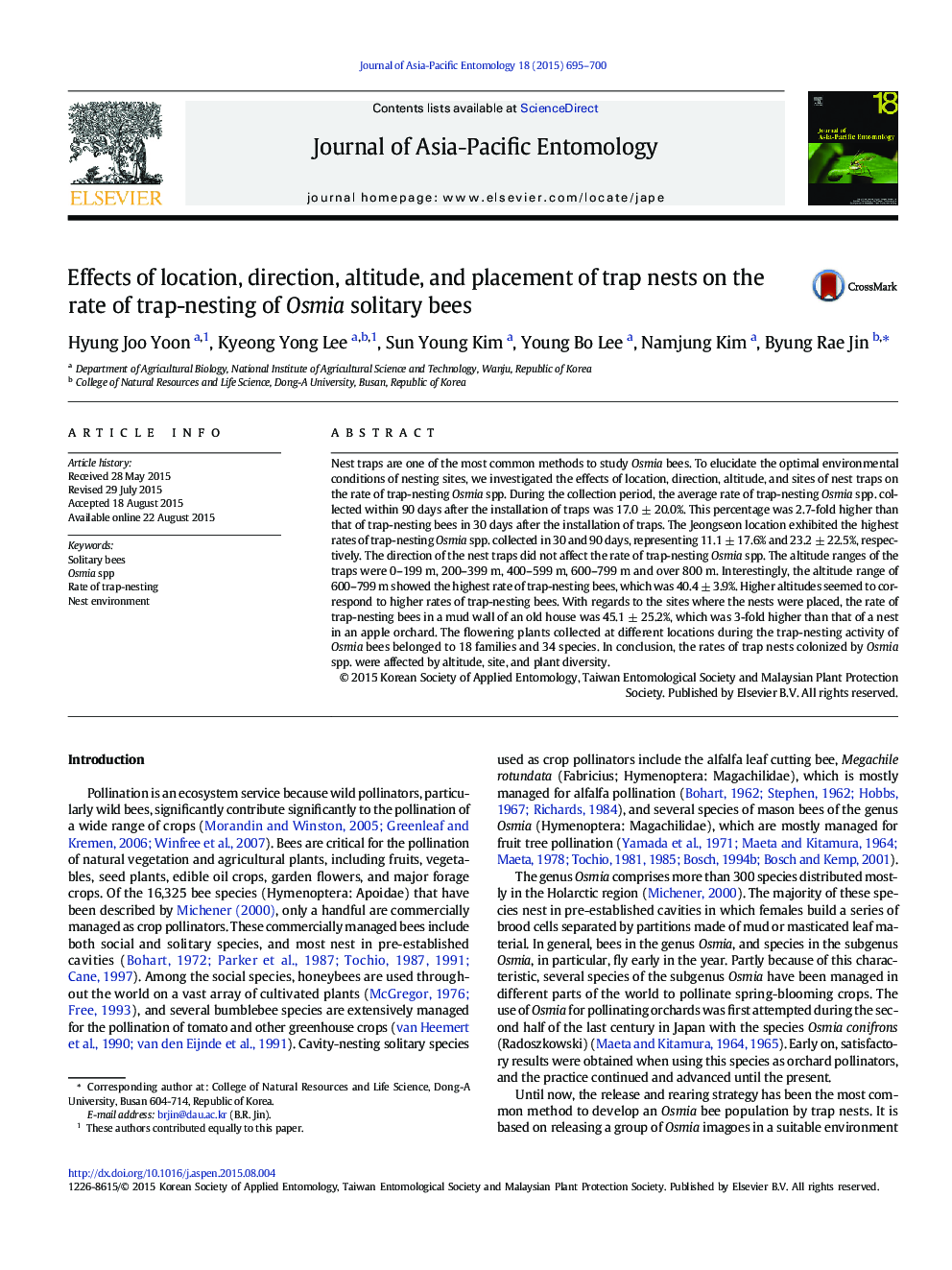| Article ID | Journal | Published Year | Pages | File Type |
|---|---|---|---|---|
| 4524389 | Journal of Asia-Pacific Entomology | 2015 | 6 Pages |
•Nest traps are one of the most common methods to study Osmia bees.•The rate of trap-nesting Osmia spp. was investigated to elucidate the optimal environmental conditions of nesting sites.•The direction of the nest traps did not affect the rate of trap-nesting Osmia spp.•The rates of trap nests colonized by Osmia spp. were affected by altitude, site, and plant diversity.
Nest traps are one of the most common methods to study Osmia bees. To elucidate the optimal environmental conditions of nesting sites, we investigated the effects of location, direction, altitude, and sites of nest traps on the rate of trap-nesting Osmia spp. During the collection period, the average rate of trap-nesting Osmia spp. collected within 90 days after the installation of traps was 17.0 ± 20.0%. This percentage was 2.7-fold higher than that of trap-nesting bees in 30 days after the installation of traps. The Jeongseon location exhibited the highest rates of trap-nesting Osmia spp. collected in 30 and 90 days, representing 11.1 ± 17.6% and 23.2 ± 22.5%, respectively. The direction of the nest traps did not affect the rate of trap-nesting Osmia spp. The altitude ranges of the traps were 0–199 m, 200–399 m, 400–599 m, 600–799 m and over 800 m. Interestingly, the altitude range of 600–799 m showed the highest rate of trap-nesting bees, which was 40.4 ± 3.9%. Higher altitudes seemed to correspond to higher rates of trap-nesting bees. With regards to the sites where the nests were placed, the rate of trap-nesting bees in a mud wall of an old house was 45.1 ± 25.2%, which was 3-fold higher than that of a nest in an apple orchard. The flowering plants collected at different locations during the trap-nesting activity of Osmia bees belonged to 18 families and 34 species. In conclusion, the rates of trap nests colonized by Osmia spp. were affected by altitude, site, and plant diversity.
Graphical abstractFigure optionsDownload full-size imageDownload as PowerPoint slide
